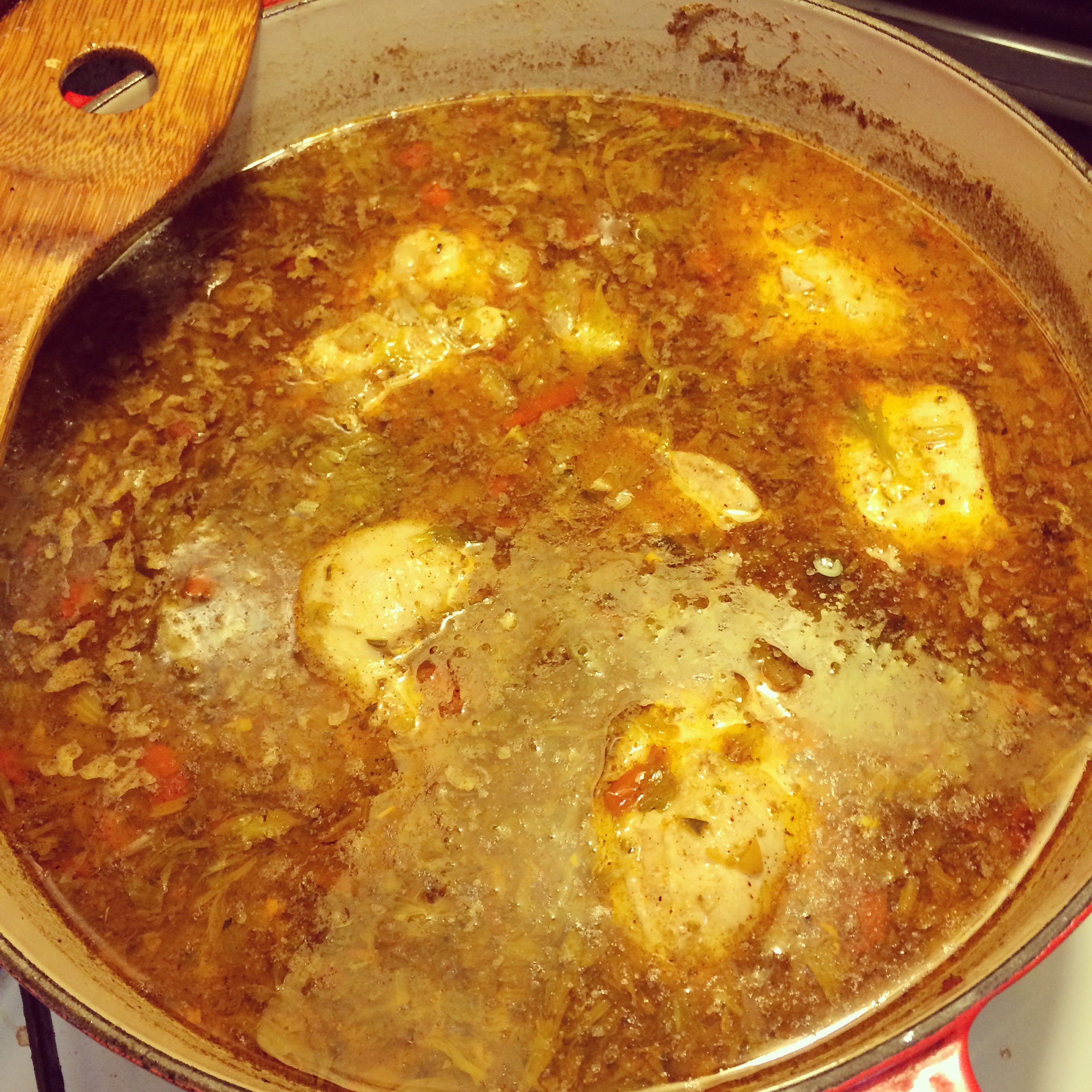This gumbo has about 3 pounds of chicken and about 4 pounds of duck breasts. I like to shred chicken into long, thin strips, which has a similar visual appearance to using crab in gumbo. The duck I dice finely, as we shoot our own duck and the only one who likes steel shot in gumbo is your dentist.
One of the things I remember from being a kid is a catfish restaurant named Kreg's. I once heard the secret ingredient was the catfish, which was rinsed in ice water four times before being breaded and fried. Whatever they did the catfish was great.
I almost always process duck at least twice to remove the gamey flavor that keeps my wife from eating it (you would think an oysterman's granddaughter would like duck). For instance, when I grill duck I'll slice it first, brine the slices 4 times in cold water for about 10-15 minutes apiece, and then wrap in bacon and a pepper slice. That process provides a beefy but not gamey taste.
When cooking duck in gumbo, I brine whole breasts several times before I poach them. Something I recently started doing is frying the finely diced, poached duck in bacon grease after I poach it. It gives the small pieces of duck great texture and helps with the gamey flavor. My wife was impressed at this batch of gumbo.
Once you've got your meat chopped up and added back to the broth, it's time to add a large can (28 oz or so) of whole peeled tomatoes, a large can (same size) of diced tomatoes, and a tablespoon or two of tomato paste. For spices, I usually add a couple of bay leaves, a palmful each of oregano and thyme, a generous shake of cayenne pepper, about 1/8 cup of Worchestershire sauce, and a generous grind out of a pepper mill (I add salt at the end, since you're cooking off a bunch of water during the process). I might add some paprika for color. This is all to taste; I quit measuring ingredients for gumbo as a teenager, and instead tried to make it taste like the kind Momma made out of the Southern Living cookbook.
Once you add all this stuff, you'll get to a point where the pot's almost full. If it's not, add some water until it looks like this:







